 There’s a lot of talk about what some in senior living call “someday syndrome.” It’s the phenomenon by which adults who have a lot to gain by moving to a retirement community for one reason or another put off the move, indicating they’ll make that change someday.
There’s a lot of talk about what some in senior living call “someday syndrome.” It’s the phenomenon by which adults who have a lot to gain by moving to a retirement community for one reason or another put off the move, indicating they’ll make that change someday.
There are industry articles, LinkedIn discussion groups, and product/service provider blogs about this phenomenon. I’ve heard it in my own parents’ discussion about moving out of their house and into a community. They’re ready…sort of. Well, not really quite yet, but they’re taking steps to be ready. I think they’re like so many of their generation. They have very good reasons to put off leaving their house. What they’re missing are compelling reasons to make that difficult change and move into a senior living community.
In 2008 and for a few years afterward, there was a delay by older consumers largely because of the housing crisis connected with the great recession. But more recently, as the housing market has slowly made a turn for the better, someday syndrome remains. My parents and many of their contemporaries are waiting because they simply don’t see themselves, their lives, anywhere but in their current home.
The Power of Storytelling
In one of Steve Moran’s blogs, “Is Good good enough?,” he talks about recent trips to two better-than-average communities. And although he records being politely and promptly greeted as well as appropriately “sold” during his visit, he felt no connection to either location. He was given good marketing collateral and told quite a bit about both communities, but there was nothing in that messaging to provide unique, compelling, relatable, or personal connections. In short, if he were a prospect, he had no heartstring tug, no strong pull to move to either community.
In the end, Steve comes around to the idea of telling stories as a way to distinguish your community from those around you, and I think he’s right. The stories about residents, their family members, their lives at your community, and how the staff facilitate the very best for them are the essence of who you are.
The good news here is that you already have stories; if you’ve been in business a while, you quite possibly have tons of them. But the hard work lies ahead in figuring out how to use them to communicate your culture, your way of life, as a tool for inviting prospects to join your community family. One of the places you should be looking for stories is within your wellness program.
What a Life Plan Community Can Offer Prospective Residents
If we look at broad brushstrokes of what a life plan can offer to prospects, there are two big categories: safety/security and lifestyle. Both categories are clear distinguishers in terms of providing more/better than what a prospect is able to achieve in her own home. The continuum of care with qualified and passionate clinicians, along with related services (therapy, podiatry, etc) all within the four walls of your community is simply not achievable for an individual who remains at home. And if your organization is on the cutting edge of opportunities for education, service, growth, and camaraderie in your wellness programming, you no doubt have robust programming that no one individual could so easily experience living in her home.
If you are a healthy individual in your 70s or 80s and you’re considering moving out of your home into a retirement community, which of those two messages is likely to pull you through someday syndrome and toward relocating in a community setting: how you’ll be cared for when you’re sick or dying, or how you can experience new opportunities and enrich your wellbeing as you live at the community?
Let me offer a word of caution here. The idea of using lifestyle to combat “someday syndrome” only works when your lifestyle programming is truly compelling, diverse, individually oriented, and life affirming. If you calendar is full of various card games, bingo, the occasional trip, the occasional lecture, the same old group fitness classes, and the monthly podiatrist visit, there’s no lifestyle to sell and you won’t be different from the competition. Make no mistake: just because the calendar is full does not mean the events are expanding the horizons of your residents.
How to Sell Lifestyle
After years of working with our senior living clients, here’s what we’ve learned about selling lifestyle:
- Selling lifestyle is easy when you have the right programming and people in place that can elevate resident stories of successful living.
- Selling lifestyle is easy when your programming has data to back up participation and engagement rates.
- Selling lifestyle is easy when your marketing and sales staff understand the language they need to use and have specific stories to make a connection with a prospect.
If you’ve been nodding your head and you believe it’s time to elevate your community lifestyle both to serve your residents better and to create a true market differentiation for what you’re selling, check out this blog.

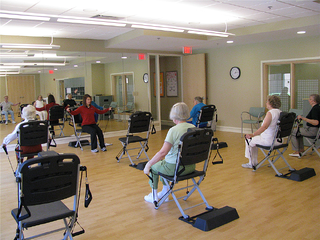 Creating successful senior living exercise programs should be complicated, but I've seen so many communities struggle to create anything beyond their typical group fitness classes and hosting some personal training in their fitness space. At our booth, we'll be showcasing these opportunities for senior living community professionals:
Creating successful senior living exercise programs should be complicated, but I've seen so many communities struggle to create anything beyond their typical group fitness classes and hosting some personal training in their fitness space. At our booth, we'll be showcasing these opportunities for senior living community professionals:


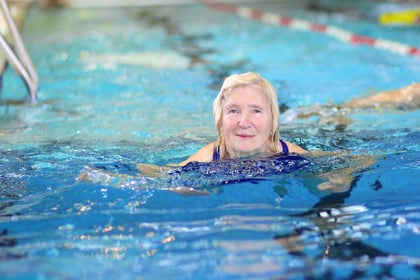 I got a call from a resident of a senior living community the other day. She told me that she’d been thinking about how her community could do better with the exercise program it offers. She saw a lot of potential to build on already successful offerings, and she’d been working with a resident team on this idea. Over the last several weeks, she’d been all over our website and decided it was time to talk about how we might be able to support her team’s goal to report on options to improve the community’s exercise program.
I got a call from a resident of a senior living community the other day. She told me that she’d been thinking about how her community could do better with the exercise program it offers. She saw a lot of potential to build on already successful offerings, and she’d been working with a resident team on this idea. Over the last several weeks, she’d been all over our website and decided it was time to talk about how we might be able to support her team’s goal to report on options to improve the community’s exercise program. 
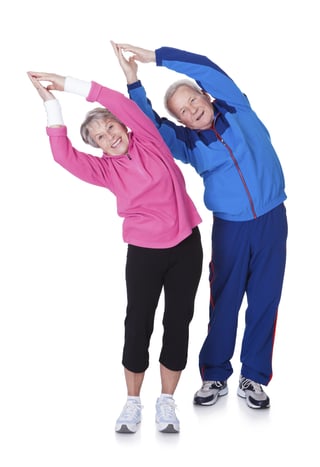 ith a proactive approach to balance training, we have embarked on a comprehensive fall-prevention model.
ith a proactive approach to balance training, we have embarked on a comprehensive fall-prevention model. 
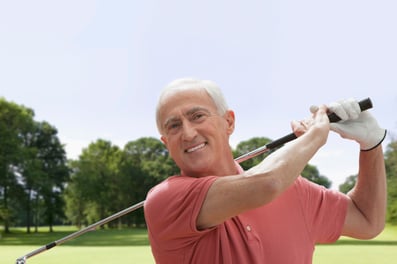 What Counts as Exercise?
What Counts as Exercise?
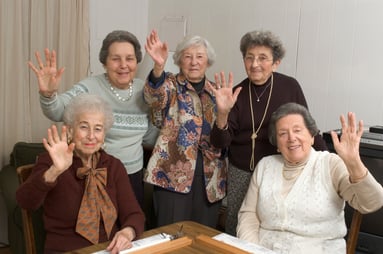

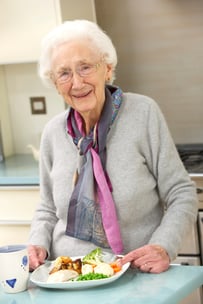

 How healthy are your bones? This may not be a question you can answer quickly. Many seniors already have weak bones and don’t know it, but the good news is you’re never too old to take steps towards keeping your bones strong. Strong bones support us and allow us to move well. They protect our heart, lungs, and brain from injury. Our bones are also a storehouse for vital minerals that we need to live.
How healthy are your bones? This may not be a question you can answer quickly. Many seniors already have weak bones and don’t know it, but the good news is you’re never too old to take steps towards keeping your bones strong. Strong bones support us and allow us to move well. They protect our heart, lungs, and brain from injury. Our bones are also a storehouse for vital minerals that we need to live.
 We do a lot of wellness consulting in senior living, and by “wellness”, I mean non-clinical, lifestyle-focused consulting. For many of our clients, that consulting relationship involves a thorough review of their “activities” department; in other cases, it’s focused more on what’s happening with their exercise program. Regardless of the original area of focus, we always arrive at the same point – building a strategy that allows the community to shift from filling a calendar toward supporting resident purpose and passion.
We do a lot of wellness consulting in senior living, and by “wellness”, I mean non-clinical, lifestyle-focused consulting. For many of our clients, that consulting relationship involves a thorough review of their “activities” department; in other cases, it’s focused more on what’s happening with their exercise program. Regardless of the original area of focus, we always arrive at the same point – building a strategy that allows the community to shift from filling a calendar toward supporting resident purpose and passion.



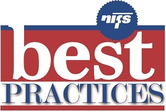
 There’s a lot of talk about what some in senior living call “someday syndrome.” It’s the phenomenon by which adults who have a lot to gain by moving to a retirement community for one reason or another put off the move, indicating they’ll make that change someday.
There’s a lot of talk about what some in senior living call “someday syndrome.” It’s the phenomenon by which adults who have a lot to gain by moving to a retirement community for one reason or another put off the move, indicating they’ll make that change someday.